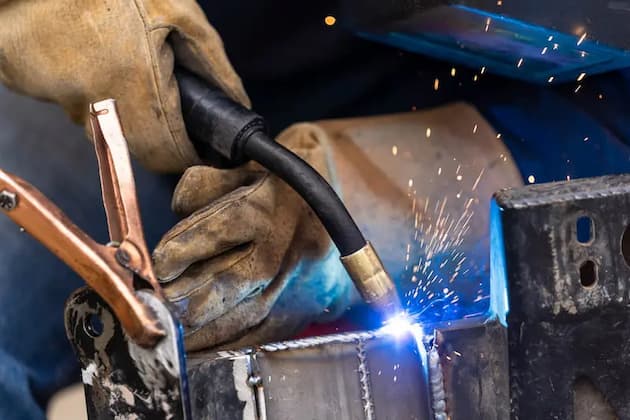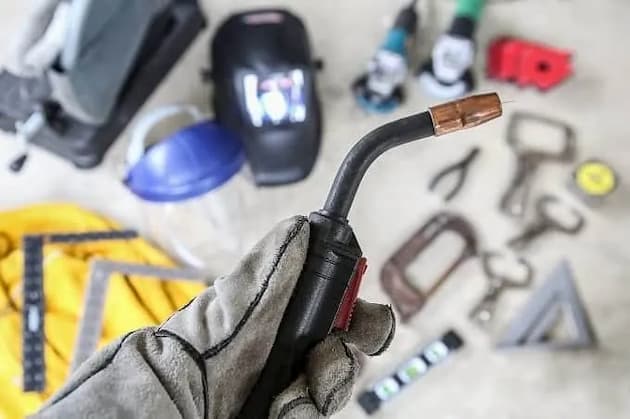Discover the Advantages of MIG Welding: The Necessary Equipment to Get Started
MIG welding is one of the most popular welding processes available for both professionals and hobbyists. It’s an efficient and versatile welding technique that can be used on a variety of materials including steel, aluminium, stainless steel, and more. In this article, I will cover everything you need to know about MIG welding so you can make the best decision when choosing a welding machine for your needs.
What is MIG Welding?
MIG stands for Metal Inert Gas, which is one of the two main types of gas welding. This type of welding differs from other welding processes because it uses a non-consumable metal wire filler instead of a consumable electrode. The MIG welding process was developed in the 1940s as an alternative to resistance spot welds, which were commonly used at that time. It’s derived from the Gas Metal Arc Welding (GMAW) process and has become one of the most popular welding processes available today.

MIG welding is a very versatile welding technique with many different applications. It can be used on thin sheet metals as well as thick plate materials and is often used with aluminium alloys, stainless steel and more. Due to its versatility and ability to weld on a wide range of metals, MIG welding has become one of the most popular welding processes available today. Why Choose MIG?
MIG welding is considered to be one of the most accessible welding processes to learn, which makes it ideal for both professionals and hobbyists interested in learning how to weld. It’s also very simple to use, which allows you to complete the welding process with ease. MIG welding is also very clean compared to other welding processes, which is great if you’re working on a project that requires an immaculate finish.
Compared to TIG welding, MIG welding is much more affordable while still providing high-quality results. It’s ideal for both professional welders and hobbyists who are looking for a versatile welding process that can be used on a wide variety of materials.
What Equipment and MIG Welding Supplies Do You Need?
While there are a number of welding machines available on the market today, most MIG welders are made up of four main components:
- Power Source (Welder)
- Gas Supply System
- Filler Material and Wire Feeder
- Shielding Gas Delivery System
These components work together to deliver high-quality welds every time. Below we will look at each of these components in more detail so you know exactly what you need when choosing a MIG welder.
The Welder
When choosing a MIG welder, you should consider purchasing one with the ability to switch between 110 and 220 Volts. This is because it will allow you to use your welding machine both at home and in the workshop without having to purchase two separate machines. While there are some welders available on the market that only have a single voltage, they are generally much more expensive than those that support both 110 and 220 Volts.

In terms of power output, most welders come with a rated output of 20-35 Amps at a voltage of 10-15 Volts. This should be enough power to weld most steels and aluminium alloys, but if you plan on welding thicker materials then it’s best to choose a welder that has a higher amperage rating (40+).
The Gas Supply System
The gas supply system is made up of three components:
- A cylinder for storing your shielding gas
- A regulator to control the flow of gas from your cylinder
- A connection that allows you to attach your regulator and welding torch together.
Your MIG welder will come in a number of different setups, but most professional welders prefer to use an oxygen/acetylene set-up because it’s much more economical than using cylinders every time. If you plan on purchasing a MIG welder for professional use, I recommend buying an acetylene/oxygen system as they produce cleaner welds than most other welding gases.
The Filler Material and Wire Feeder
The filler materials used in MIG welding are known as consumable MIG welding supplies, which means it’s used up during the welding process. This means that you will need to replace your filler wire regularly if you want to get the best results every time. Most MIG welders come with at least two different gauges of filler wire: 0.8mm and 1.0mm. While these are the most common gauges, some welders come with a third gauge of 0.6mm for welding thinner materials such as aluminium alloys or stainless steel. In addition to the wire itself, you will also need to purchase some MIG welding spools to hold your filler wire while it’s in use. These are very cheap and can be purchased from most hardware stores if needed.
The Shielding Gas Delivery System
The shielding gas delivery system is used to deliver clean oxygen or acetylene to your welding torch. It’s made up of three main components:
- An oxygen or acetylene regulator (depending on your set-up)
- A pipe that connects the regulator to your welder
- A filter that prevents any impurities from entering your system while welding.
The shielding gas delivery system is one of the most important parts of your MIG welder, as it ensures you get high-quality welds every time. If you are planning on purchasing a new welding machine then I would recommend buying one that comes with all three components (welder, gas supply system and filler material). This will save you the hassle of having to purchase additional equipment separately and is much more convenient than buying individual parts separately.